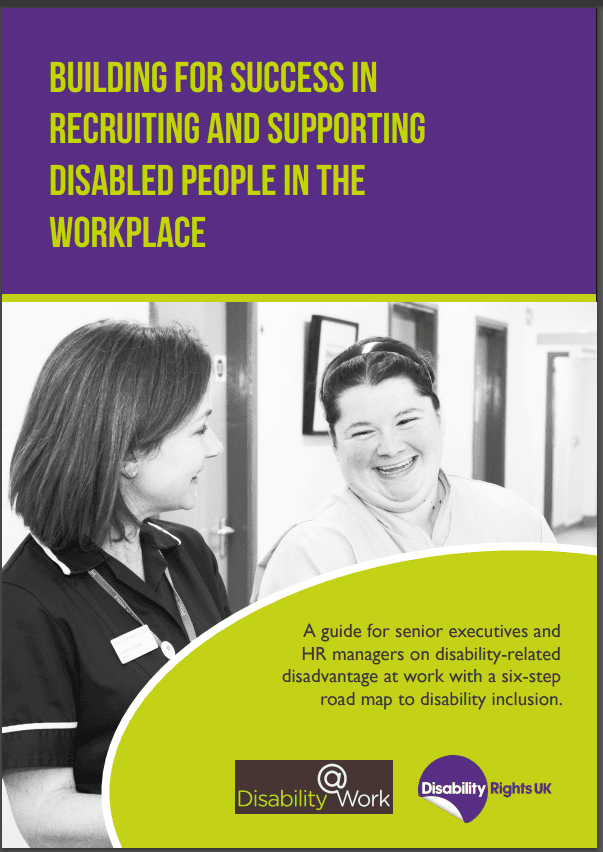Building for Success in Recruiting and Supporting Disabled People in the Workplace
Publisher: Disability Rights UK
Topics: Supported Employment Practice-Best Practices, Supported Employment Practice-Self Employment, Pathways-Professional Development, Pathways-Career Pathways, Pathways-Mentorship, Pathways-Job Readiness, Workplace Solutions – Accessibility & Universal Design, Workplace Solutions – Accommodations, Workplace Solutions – Jobseeker and Employee Engagement, Workplace Solutions – Disability Specific Workplace Inclusion
Year published: 2015
Type of resource: Publication
Disabled people tend to find it more difficult to gain and retain employment.
This is reflected in the disability employment gap (DEG) in the UK, the difference in employment rates between disabled (49.2%) and non-disabled (80.6%) people, of 31.4 percentage points. The DEG is the key indicator of disability disadvantage. In 2015, the UK Government pledged to halve the DEG. To do this will require looking beyond the contribution of government initiatives such as the Work and Health Programme and consider the role of
business.
There is a requirement on employers to make reasonable adjustments to a feature of the workplace (for example, to make it more accessible) or to a practice (for example, the recruitment procedure) to enable disabled people to gain or retain employment. This unique feature of the law on disability and employment places a positive duty on the employer in favour of disabled employees or applicants and shifts the duty from equality of treatment to equality of
opportunity. Failure to make reasonable adjustments counts as discrimination and is one of the most common breaches of the Equality Act (2010) in relation to disability. Many organisations don’t know which of their employees or job applicants is disabled. As a result, simple low cost reasonable adjustments that might support their employment or job application are not considered. Managers under-estimate the prevalence of disability in the workplace and only a minority of workplaces adopt even basic disability equality practices. Demographic trends such as population aging indicate that disability is likely to increase amongst the workforce requiring proactive and innovative strategies from firms to attract and manage increasing numbers of disabled people in work.
Access the resource here: Building for Success in Recruiting and Supporting Disabled People in the Workplace


